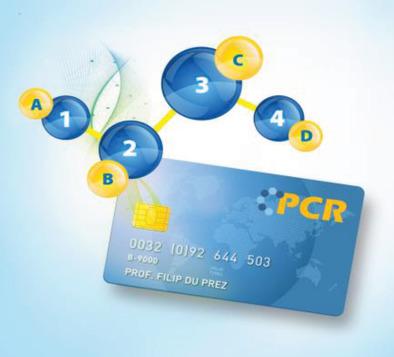Our official English website, www.x-mol.net, welcomes your
feedback! (Note: you will need to create a separate account there.)
From Sequence-Defined Macromolecules to Macromolecular Pin Codes.
Advanced Science ( IF 14.3 ) Pub Date : 2020-03-03 , DOI: 10.1002/advs.201903698 Joshua O Holloway 1 , Filip Van Lijsebetten 1 , Nezha Badi 1 , Hannes A Houck 1 , Filip E Du Prez 1
Advanced Science ( IF 14.3 ) Pub Date : 2020-03-03 , DOI: 10.1002/advs.201903698 Joshua O Holloway 1 , Filip Van Lijsebetten 1 , Nezha Badi 1 , Hannes A Houck 1 , Filip E Du Prez 1
Affiliation

|
Dynamic sequence-defined oligomers carrying a chemically written pin code are obtained through a strategy combining multicomponent reactions with the thermoreversible addition of 1,2,4-triazoline-3,5-diones (TADs) to indole substrates. The precision oligomers are specifically designed to be encrypted upon heating as a result of the random reshuffling of the TAD-indole covalent bonds within the backbone, thereby resulting in the scrambling of the encoded information. The encrypted pin code can eventually be decrypted following a second heating step that enables the macromolecular pin code to be deciphered using 1D electrospray ionization-mass spectrometry (ESI-MS). The herein introduced concept of encryption/decryption represents a key advancement compared with current strategies that typically use uncontrolled degradation to erase and tandem mass spectrometry (MS/MS) to analyze, decipher, and read-out chemically encrypted information. Additionally, the synthesized macromolecules are coated onto a high-value polymer material, which demonstrates their potential application as coded product tags for anti-counterfeiting purposes.
中文翻译:

从序列定义的大分子到大分子密码。
通过将多组分反应与 1,2,4-三唑啉-3,5-二酮 (TAD) 热可逆添加到吲哚底物相结合的策略,获得携带化学写入 pin 代码的动态序列定义低聚物。精密低聚物经过专门设计,可在加热时进行加密,这是由于主链内 TAD-吲哚共价键的随机重新排列,从而导致编码信息的混乱。经过第二次加热步骤后,加密的 pin 码最终可以被解密,从而可以使用 1D 电喷雾电离质谱 (ESI-MS) 破译大分子 pin 码。与当前通常使用不受控制的降解来擦除和串联质谱(MS/MS)来分析、解密和读出化学加密信息的策略相比,本文引入的加密/解密概念代表了关键的进步。此外,合成的大分子被涂覆在高价值的聚合物材料上,这表明它们作为防伪编码产品标签的潜在应用。
更新日期:2020-04-21
中文翻译:

从序列定义的大分子到大分子密码。
通过将多组分反应与 1,2,4-三唑啉-3,5-二酮 (TAD) 热可逆添加到吲哚底物相结合的策略,获得携带化学写入 pin 代码的动态序列定义低聚物。精密低聚物经过专门设计,可在加热时进行加密,这是由于主链内 TAD-吲哚共价键的随机重新排列,从而导致编码信息的混乱。经过第二次加热步骤后,加密的 pin 码最终可以被解密,从而可以使用 1D 电喷雾电离质谱 (ESI-MS) 破译大分子 pin 码。与当前通常使用不受控制的降解来擦除和串联质谱(MS/MS)来分析、解密和读出化学加密信息的策略相比,本文引入的加密/解密概念代表了关键的进步。此外,合成的大分子被涂覆在高价值的聚合物材料上,这表明它们作为防伪编码产品标签的潜在应用。











































 京公网安备 11010802027423号
京公网安备 11010802027423号